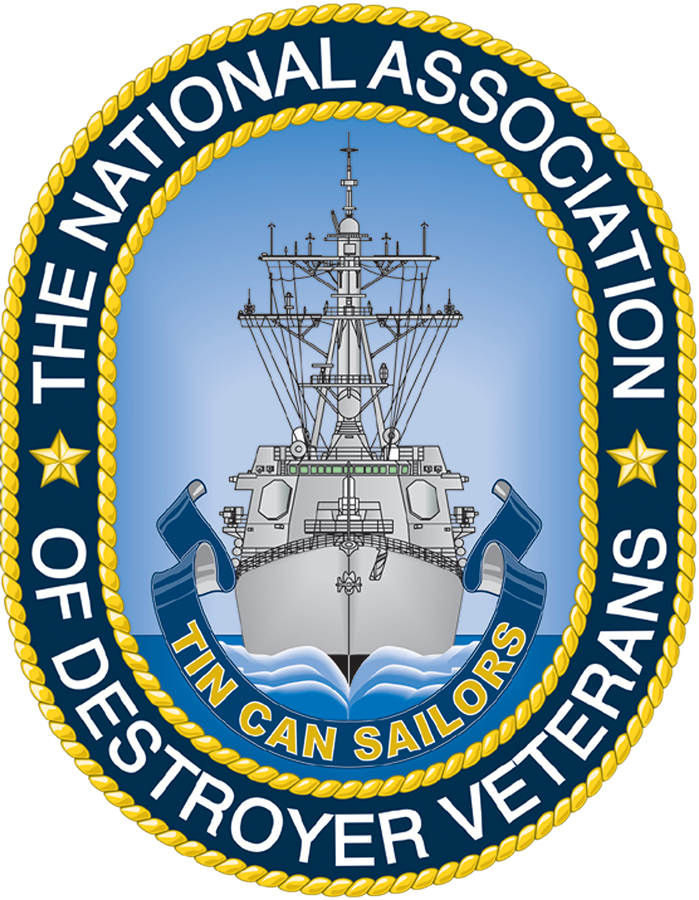Hull Number: DD-624
Launch Date: 06/14/1942
Commissioned Date: 04/30/1943
Decommissioned Date: 06/20/1946
Call Sign: NBYC
Class: GLEAVES
GLEAVES Class
Data for USS Gleaves (DD-423) as of 1945
Length Overall: 348’ 4"
Beam: 36’ 1"
Draft: 13’ 6"
Standard Displacement: 1,630 tons
Full Load Displacement: 2,525 tons
Fuel capacity: 2,928 barrels
Armament:
Four 5″/38 caliber guns
Two 40mm twin anti-aircraft mounts
Two 21″ quintuple torpedo tub
Complement:
16 Officers
260 Enlisted
Propulsion:
4 Boilers
2 Westinghouse Turbines: 50,000 horsepower
Highest speed on trials: 37.4 knots
Namesake: CHARLES BALDWIN
CHARLES BALDWIN
Dictionary of American Naval Fighting Ships, September 2016
Charles Baldwin, born on 30 June 1839 in Smyrna, Delaware, enlisted in the Navy on 13 January 1864 at Philadelphia, Pennsylvania. While serving as a coal heaver in the side wheel gunboat Wyalusing stationed at the western end of North Carolina’s Albemarle Sound near the mouth of the Roanoke River, Baldwin joined four other enlisted men in devising a plan to sink the Confederate ironclad ram Albemarle. Their superiors approved the project and, in the afternoon of 26 May 1864, the five sailors rowed up the Middle River with two 100 pound torpedoes (mines) and carried them by stretcher across the swampland separating the Middle and Roanoke Rivers to a point just above and opposite Albemarle‘s mooring place on the Roanoke at Plymouth. Baldwin and another sailor, John Lloyd, then swam across the river with a towline attached to the explosive devices and hauled them across. They then connected the torpedoes by a bridle; and Baldwin reentered the water to guide them downstream toward the ram, hoping to place the bridle across her prow torpedo making contact with each side of her hull. He was then to swim clear before another man, stationed across the river, detonated the torpedoes electrically.
The Confederates, however, caught sight of both swimmer and torpedoes when they were just a few yards short of their goal. A hail of musketry from the shore followed soon after a sentry’s alarm. Lloyd quickly cut the guideline while Baldwin swam back across the river and hid in the swamp. Three of the five Union sailors returned to Wyalusing on the evening of 28 May. Baldwin and the remaining man spent two hungry days and nights evading Southern forces before being rescued on the 28th by Commodore Hull. For his part in the mission, Baldwin was promoted to acting master’s mate and later received the Medal of Honor.
Despite the failure of Baldwin’s daring expedition, efforts to destroy Albemarle continued. In June, a string of torpedoes was placed across the Roanoke to be exploded under the ram should she descend the river for another foray into Albemarle Sound. Each was attached to a lock string held by a sailor hiding on shore ready to pull a detonating wire were Albemarle to pass over his charge. Baldwin commanded those pickets until captured along with four of his men on Independence Day, 4 July 1864. Later exchanged, Baldwin was mustered out of the Navy on 12 January 1865 at the expiration of his term of enlistment.
Following the war, he lived and worked at various places in several states before finally settling in Accokeek, a small hamlet in Maryland south of Washington, D.C. Baldwin died in Accokeek on 22 January 1911.
Disposition:
Ran aground on Montauk Point, Long Island on 04/16/1961 after parting her tow in heavy seas. Pulled off on 06/04/1961. Grounding had extensively damaged the hull and on 06/06/1961, she was scuttled in 200 fathoms of water, seaward from the spot where she had run aground.
